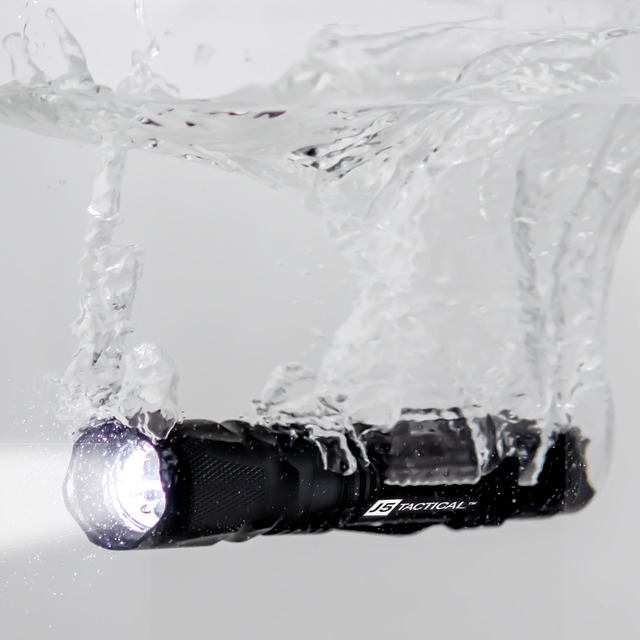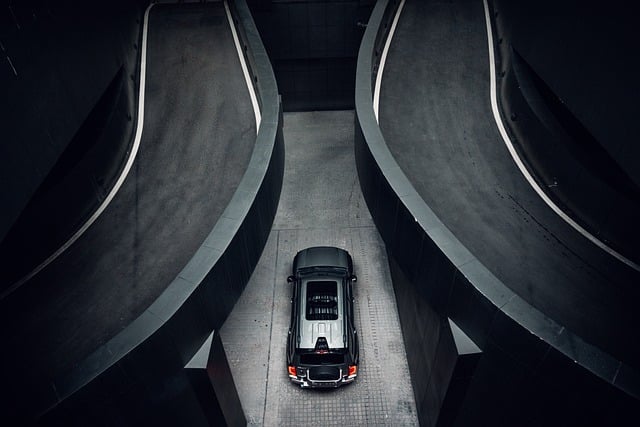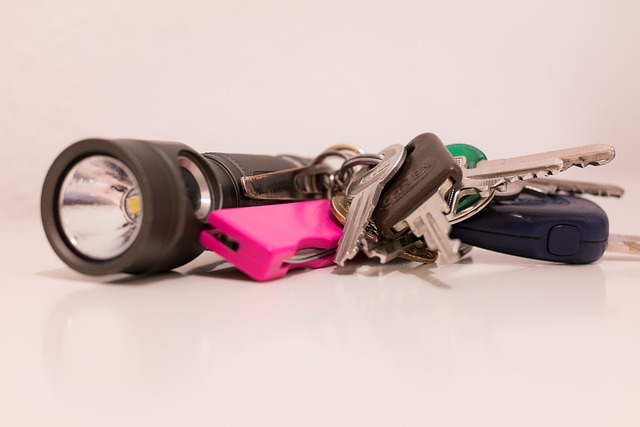When facing an automotive emergency, a dependable hands-free flashlight is indispensable for safely addressing issues under the hood. The ideal flashlight should be durable, with features like adjustable brightness and direction, rugged construction to withstand harsh conditions, and high-intensity LEDs for bright illumination. It should also have long battery life or rechargeable capabilities to ensure continuous light during repairs. For safety, especially at night, secure the light in place to avoid casting shadows and potential obstruction of critical components. Regular maintenance, including keeping it charged, inspecting for wear and tear, and cleaning the lens, is crucial to guarantee the flashlight's reliability when you need it most. Always follow the manufacturer's guidelines to ensure optimal performance and safety during automotive repairs, making flashlights for automotive emergencies a critical tool in your maintenance arsenal.
When automotive emergencies strike, safety and visibility under the hood are paramount. This article illuminates the critical role of hands-free lights in navigating these challenging situations. We’ll explore essential features to look for in flashlights for automotive emergencies, highlighting their importance during crisis moments. With a comparative analysis of top models, we guide you through selecting the ideal hands-free light for your vehicle. Further, detailed instructions on utilizing hands-free lighting during repairs ensure optimal safety and efficiency. We also provide best practices and maintenance tips to prolong the lifespan of your automotive emergency hands-free light, enhancing your preparedness for any roadside eventuality.
- Essential Features of Hands-Free Lights for Automotive Emergencies
- The Importance of Under-the-Hood Visibility in Crisis Situations
- Top Flashlights for Automotive Emergencies: A Comparative Analysis
- How to Choose the Right Hands-Free Light for Your Vehicle
- Step-by-Step Guide to Using Hands-Free Lights During Automotive Repairs
- Safety Tips and Best Practices When Working Under the Hood with Hands-Free Lighting
- Maintenance and Care of Your Automotive Emergency Hands-Free Light
Essential Features of Hands-Free Lights for Automotive Emergencies

When automotive emergencies strike, having a reliable light source can be the difference between effective problem-solving and further complications. Flashlights for automotive emergencies are specifically designed to cater to the needs of motorists in such scenarios. A critical feature of these flashlights is their hands-free capability, which allows users to direct light exactly where it’s needed without occupying a hand that could be working on the vehicle. This is particularly beneficial when one must navigate under-the-hood components, where space is limited and both hands are often required for manipulation or precision tasks. The best flashlights in this category offer adjustable heads that can be positioned to illuminate engine compartments, dashboards, or any other area without creating shadows. Additionally, they should have a durable construction to withstand the rough conditions typically found in an automotive environment. Features such as high-intensity LEDs provide bright, focused light, while robust housing protects against drops, dust, and water. For added safety, some models come with a red filter or red light mode, which is less disruptive to one’s night vision and less likely to attract unwanted attention in the event of a roadside emergency. When selecting a flashlight for automotive emergencies, consider models that offer a balance between brightness, battery life, and ease of use, ensuring that you are prepared for any unexpected situation on the road.
The Importance of Under-the-Hood Visibility in Crisis Situations

When automotive emergencies strike, whether it’s a roadside breakdown or an urgent repair in a crisis situation, having adequate visibility under-the-hood is paramount. Flashlights for automotive emergencies serve as indispensable tools in such scenarios. They illuminate dark spaces, allowing drivers and mechanics to safely navigate and diagnose issues with the vehicle’s engine and components. In situations where every second counts, such as during a nighttime breakdown or when a vehicle is stranded in a remote location, hands-free lighting frees up users’ hands to perform tasks or to signal for help if necessary. This functionality is particularly crucial when individuals must work in confined spaces or manage delicate repairs that require both illumination and the use of tools simultaneously. Flashlights designed specifically for automotive emergencies often come with features like adjustable brightness, durable construction, and magnetic bases or clip-on mechanisms that position the light exactly where it’s needed most, hands-free. These attributes not only enhance safety but also efficiency, ensuring that drivers can address their issues swiftly and effectively, minimizing further complications and potential risks associated with automotive emergencies.
Top Flashlights for Automotive Emergencies: A Comparative Analysis

When an automotive emergency strikes, having a reliable hands-free light source can be a game-changer. Flashlights for automotive emergencies are designed to illuminate hard-to-reach areas under the hood with ease, ensuring that drivers and mechanics can perform necessary repairs safely and efficiently. The market offers a variety of models tailored for this specific use case. For instance, the Streamlight 67280 Pro Reach Flashlight features a gooseneck base that allows users to direct its bright beam exactly where it’s needed without the need for hands. Its high-intensity LED emits a focused light that can penetrate dark engine compartments, making it a top choice for automotive professionals and car owners alike. Another notable option is the Ohuhu LED Auto Emergency Roadside Kit, which includes not only a flashlight but also a hazard triangular warning light and a glass breaker rescue tool, offering a comprehensive solution for roadside emergencies.
In comparison, the KlarUS XT11GT offers an impressive 1000 lumens output with a throw distance of up to 328 meters, providing exceptional visibility for under-the-hood work or signaling in case of breakdowns on the road. Its durable construction and impact-resistant design ensure it can withstand the rigors of automotive environments. Users looking for a more budget-friendly option should consider the Energizer LED Headlight and Work Light, which features an adjustable headband and a swiveling LED light that can be used hands-free, making it ideal for working in tight spaces. Each of these flashlights for automotive emergencies brings unique features to the table, catering to different needs and preferences, from high lumen outputs to versatile designs suited for under-the-hood work or roadside assistance.
How to Choose the Right Hands-Free Light for Your Vehicle

When selecting a hands-free light for under-the-hood work, especially in automotive emergencies, it’s crucial to consider several factors to ensure optimal visibility and safety. Firstly, assess the size and reach of the light. The light should have enough power to clearly illuminate all areas underneath the hood, where repairs often take place. A model with an adjustable gooseneck can be positioned to direct light exactly where it’s needed without casting shadows or wasting light on non-essential areas.
Secondly, look for a hands-free light with a durable construction, as these spaces can be harsh and potentially hazardous. A rugged design will ensure the light endures exposure to grease, oil, and other automotive fluids without malfunctioning. Additionally, consider the brightness level; flashlights for automotive emergencies should offer a high lumen output to penetrate dark environments effectively. Battery life is also a significant factor; opt for a light with long-lasting batteries or rechargeable capabilities to avoid unexpected power loss during critical tasks. By carefully evaluating these attributes, you can choose the right hands-free light that will serve as an indispensable tool in your automotive repair arsenal.
Step-by-Step Guide to Using Hands-Free Lights During Automotive Repairs

When engaging in automotive repairs, particularly under-the-hood work, optimal lighting is crucial to ensure visibility and precision. A hands-free light system can greatly enhance the working environment by providing illumination that allows both hands to remain free for the task at hand. Here’s a step-by-step guide to effectively using hands-free lights during automotive repairs:
Begin by securing a robust flashlight designed specifically for automotive emergencies. These models are often equipped with adjustable stands and feature high lumen outputs, ensuring they can stand up to the oily and greasy conditions typically found in engine bays. Position the base of the flashlight’s stand near your work area, ensuring it is stable and out of the way of moving parts. Adjust the height and angle of the light head to direct a wide beam over the area you intend to work on. The goal is to cast a bright, even light that reveals all the necessary details without causing harsh shadows or reflections that could obscure your view.
Once positioned, activate the light. High-quality automotive flashlights often come with multiple lighting modes, including focused spots and broader floodlights. Choose the mode that best illuminates your work area. As you begin your repair work, you’ll appreciate the hands-free operation, which allows you to navigate around the engine compartment effortlessly. Additionally, some hands-free lights for automotive use are equipped with sensors that automatically activate when motion is detected, adding an extra layer of convenience and safety. Remember to periodically check the battery level of your flashlight to avoid unexpected power loss mid-repair. By following these steps, you can maximize the benefits of hands-free lights during automotive repairs, ensuring a safer and more efficient working experience.
Safety Tips and Best Practices When Working Under the Hood with Hands-Free Lighting

When working under the hood of a vehicle, safety is paramount to prevent accidents and ensure efficient repairs. Utilizing flashlights for automotive emergencies, particularly with hands-free lighting solutions, enhances visibility without compromising the mechanic’s ability to navigate the limited space beneath the car’s bonnet. To maintain safety while employing hands-free lights, it is crucial to secure the light firmly in a position that directs illumination exactly where it’s needed. The light should be positioned so that its beam points towards the work area without casting shadows that could obscure critical components or tasks. Additionally, the device should be set up with care, ensuring it won’t fall or become dislodged when moving around or working above the light source.
Selecting a hands-free light with adjustable features can provide greater flexibility and safety. For instance, a flashlight that offers adjustable intensity and a focused beam can help mechanics see more clearly without causing glare on reflective surfaces. It’s also advisable to choose a light with a durable, non-conductive clamp or bracket to avoid any risk of electrical shorts when working near live circuits. Moreover, opting for lights with long battery life or rechargeable capabilities can prevent the need to stop work to change batteries or find an alternative power source, thus reducing the potential for additional accidents or interruptions. Always follow the manufacturer’s guidelines for safe operation and handle the light with care to ensure a secure and incident-free automotive repair experience.
Maintenance and Care of Your Automotive Emergency Hands-Free Light

When managing an automotive emergency, especially at night or in low-light conditions, having a reliable hands-free light source can be pivotal. Flashlights for automotive emergencies, designed with this specific need in mind, offer a hands-free operation that allows you to keep your hands free for more critical tasks. To maintain and care for your automotive emergency hands-free light, it’s crucial to ensure it is always fully charged or equipped with fresh batteries to avoid being stranded without power when needed most. Regularly inspect the light’s casing and connections for any signs of wear or damage that could impair its function. Additionally, cleaning the lens with a soft, damp cloth can remove grime and debris, ensuring optimal performance without glare or obstruction. Secure the light in a stable position where it won’t be knocked or moved during work under the hood, and always store it in a dry place to prevent corrosion of any electronic components. By following these maintenance practices, your flashlight for automotive emergencies will remain a dependable tool when safety and visibility are paramount.
When faced with an automotive emergency, safety and visibility are paramount. The article has outlined the critical features of hands-free lights, emphasizing their role in providing essential illumination under the hood. We’ve explored the significance of clear visibility during crisis situations and compared top flashlights for automotive emergencies to help drivers choose wisely. Additionally, the guide on selecting the right hands-free light for your vehicle ensures you’re prepared for any repair task. With a step-by-step demonstration on their use and important safety tips, the article equips you with comprehensive knowledge. Regular maintenance and care of these lights are also crucial to guarantee they function optimally when needed. In conclusion, incorporating a hands-free light into your automotive toolkit is not just a smart decision; it’s an essential one for ensuring your safety and the safety of your vehicle during unexpected situations on the road.
